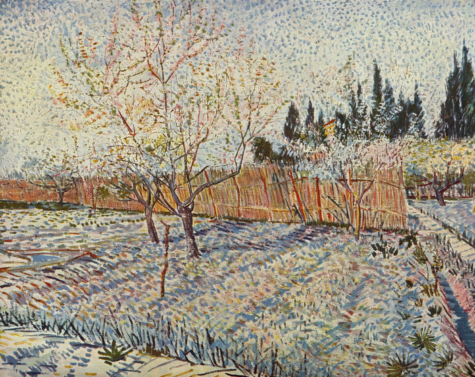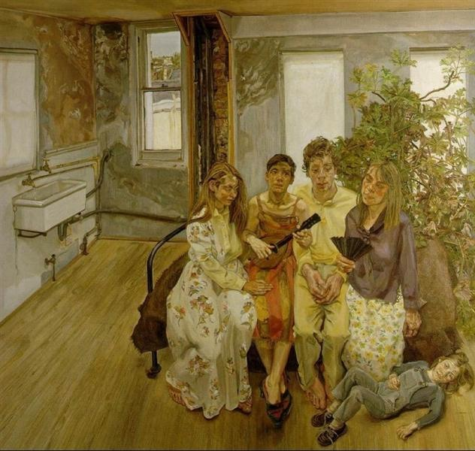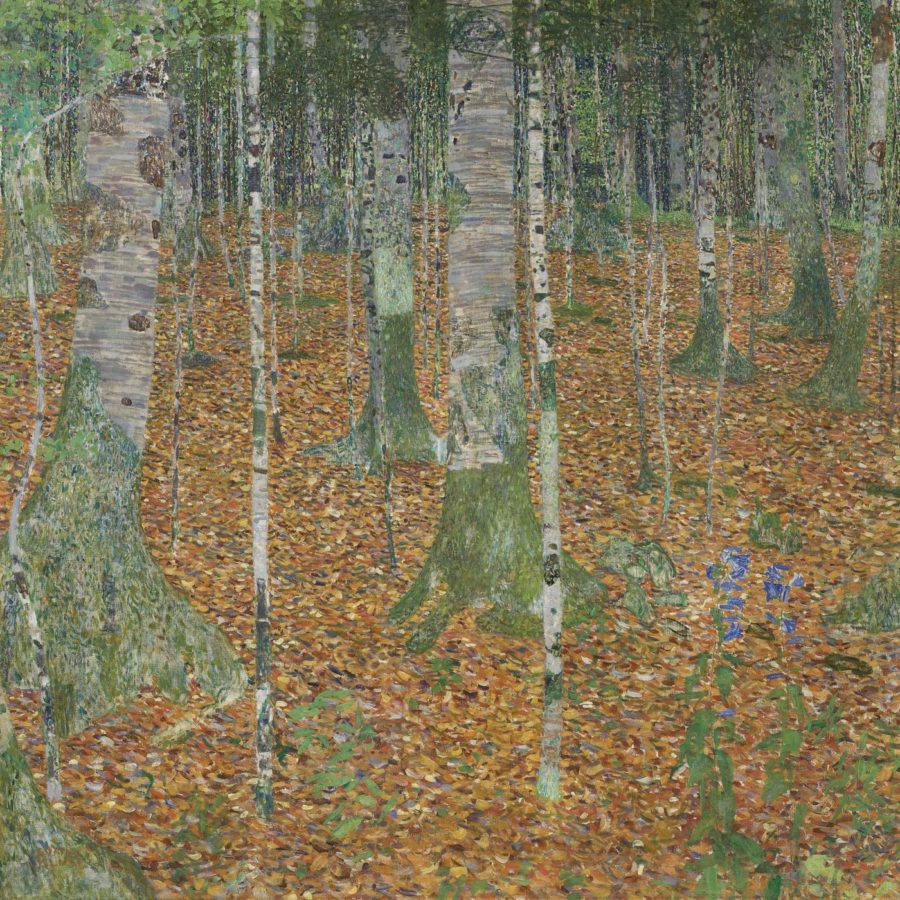Goodbye Public, Hello Penthouse: The Paul Allen Art Sale Reaches New Heights
The Paul Allen sale experienced record breaking numbers and had vast implications regarding the strength and vitality of the art market as a whole.
Gustav Klimt, Public domain, via Wikimedia Commons
Gustav Klimt’s 1903 painting ‘Birch Forest’ was one of the sale’s highlights and was among the plethora of landscape works featured in the collection.
A small patch of violets in the corner of the frame captures your eye. Amongst the verdant moss and eerie expanse of birch trees, this small rarity stands out against the densely packed forest — the only indication that color permeates this silent, solitary world.
This autumnal landscape is Gustav Klimt’s 1903 painting ‘Birch Forest,’ part of Paul Allen’s expansive art collection that sold in a Christie’s auction between November 9th and 10th, 2022, for a record-shattering $1.5 billion.
The late Microsoft cofounder was quite famous in art circles, in part due to his affluence, but also due to his notorious secrecy regarding the items in his collection. Allen never bid directly, preferring to have his subordinates appear at auctions instead. Often, art was not known to be his purchase until it was directly packaged and delivered to his name. The full contents of his collection were never revealed, only speculated upon.
That was until now.
The Christie’s auction was carried out over two days and showcased more than one-hundred and fifty works in Paul Allen’s diverse treasure trove. The pieces spanned over almost five centuries, promoting bright classical portraits and bold abstract paintings alike.
Mr. Allen had a particular affinity for the development of landscape paintings, apparent from their prevalence among his collection. Along with the Klimt, Van Gogh’s ‘Verger Avec Cypres,’ a poignant picture depicting an orchard caught in the peak of spring bloom, smashed previous auction records for the artist. Figurative works like David Hockney’s ‘The Conversation’ – which depicts an artist and writer engaged in tense discussion and ‘Three Studies for Self Portrait’ – a sequence of portraits against a blazing backdrop by Francis Bacon – were also prevalent among the artwork. But there were definite exceptions, particularly Lucian Freud’s fascinating realist portrait ‘Large Interior W11 (after Watteau),’ which deviated from the typical art of the collection through its muted palette and striking, contemporary style.

The public had the opportunity to view the works before they were put up for auction, and more than 20,000 people lined up for a chance to see the masterpieces. This is not uncommon with privatized art sales, where people want to catch a glimpse of the works before they disappear behind closed doors, possibly forever.
Right from the start of the sale, the works began to exceed their estimates. Pieces like ‘Les Poseuses, Ensemble (Petite version)’ by Impressionist Georges Seurat, expected to go for $100 million, went for $149 million. Similarly, ‘Maternité II,’ a stunning figurative piece by French Impressionist Paul Gauguin, sold for $105.7 million, thereby nearly tripling the previous auction record for the painter. Even the initial three lots reached record values, most notably Edward Steichen’s record breaking photograph ‘Flatiron,’ which sold at a price of $11.8 million. “With such great works of art we hoped to achieve our presale estimates,” said Bonnie Brennan and Marc Porter, President and Chairman of Christie’s America respectively, who were responsible for organizing the sale. “We are delighted that they were surpassed,” Brennan and Porter said.

Seldom does a collection of such high caliber reach the auction market. Such treasures are usually sold privately, or sometimes donated to museums to showcase. And yet, the Christie’s Paul Allen sale stood to be an anomaly, generating a level of excitement often not seen in the modern art world “Just having a sale featuring such renowned artists, and art that was produced at the peak of their careers, is extremely rare,” FIT Art Market Studies Professor Natasha Degen explained.
The November Allen auction came at a time of deep economic instability in the country. Inflation has soared and thousands of businesses and jobs have been lost. Many had assumed that the fine art market would experience a similar downward spiral. Yet, the Allen collection saw the highest total proceeds for a private art in history.
The reason for this booming success is multi-faceted.
For one, the art market can be used as a hedge against inflation. It is a tangible item and is used as both an investment and a form of consumption. Art prices tend to stay relatively constant. Unlike products that fluctuate with the slightest change, it is generally considered to be a stable or appreciating asset.
On the other hand, the majority of high profile auctioneers are hyper-wealthy billionaires, whose affluence was only boosted during the pandemic. “Art is not an essential purchase,” said Professor Degan, “It is mostly bought by the uber rich and wealthy, not the ones most affected by downturns in the economy.”
Art has often been a consistent purchase through wars and crises, in part due to the aesthetic pleasure it provides its collectors. Art is a universal expression that unites individuals and is appreciated and cultivated despite global circumstances.
There is also a history of art market successes coming at a time of general market crashes. The day that Lehman Brothers filed for bankruptcy protection, British artist Damien Hirst (whose work was also featured in the Allen sale) sold a huge collection of his art in a high performing auction through Sothebys, clearly displaying the endurance of the art market even amidst an economic crisis. “It is a volatile moment in the world,” said Ms. Brennan and Mr. Porter. “But in retrospect, all of history is.”
But it must be recognized that the sale was a highly unique circumstance. “Mr Allen had the greatest number of masterpieces to be offered for sale. So, in that way, the high profits of the collection were predictable,” said Ms. Brennan and Mr. Porter. This does not necessarily represent an invigorated art world, but perhaps just excitement over a particularly desired collection.
Even more so, the art world is not just limited to auction houses but galleries and other private sellers as well. “In a trend like a recession, a smaller gallery is affected differently than one of the big auction houses like Philips, Sotheby’s, and Christies,” Ms. Degen added. “ It is a little harder to measure the revenue and stability of galleries, because they are private businesses and don’t have to report their public sales like the auction houses.”
Interestingly, the Allen sale also represents the growing shift in public interest away from the works of the old masters towards younger, fresher artists. In the Allen auction, gorgeous paintings from the past were underrepresented in the collection in comparison to the 19th, 20th and even 21st century pieces. The older masterworks that were featured, including a breathtaking portrait by Botticelli and a snapshot of the Venice piazza by Canaletto, fetched lower prices than deserved and garnered much less media attention than their contemporary counterparts.
This change is indicative of the modernization of the art market. This includes the digital currency NFT’s, which became a global phenomenon in recent years, broadening the art market and driving up purchasing on the whole.
But aside from the implications for the art market, some view the Allen sale a part of a decline in the inherent value of art. Many wonder if these values have become tainted by the individual need for money and influence. Instead of being donated to public institutions such as art museums that could publicize these phenomenal works, these pieces are now locked away in the mansions of billionaires, hidden from the eyes of the rest of the world.
The collection was practically a slice of history itself. It featured over five centuries of artistic development, commemorating different periods of history and divergent ways of life that most individuals will likely never have the chance to experience, now that the works are split up and privately held.
True, the proceeds are being donated to a good cause. Mr. Allen handpicked organizations that would receive the almost $2 billion the collection garnered, although they were not revealed prior to the sale, in order to avoid any strife. This was an admirable choice that displayed Paul Allen’s role as a steward, but one that seems to fit into a damaging pattern of using art as a currency and not a remarkable entity that deserves to be publicly celebrated and appreciated.
This is not a unique circumstance. Especially since the COVID-19 pandemic, and even prior to it, museums have experienced financial instability with decreased revenue and visitors, and they are often not able to afford the sharp fees that come with acquiring art collections. More and more, these pieces are being withheld from museums and galleries that could present the phenomenal works to the world.
For every art admirer, there is usually a piece that transformed and irrevocably shaped the way they viewed art. It opened a door and took art from something relatively unimportant to a source of wonder. Now, these artworks will be secluded and unable to impart on others this seminal experience. Other privatized collections will not be able to give people this feeling. So while we can appreciate Paul Allen’s collection, and all of the grounds it broke for the art market, it must be remembered that there is a tragedy in knowing a whole crowd of people will never have a chance to glimpse the splash of violet in the corner of the Klimt.
“It is a volatile moment in the world,” said Ms. Brennan and Mr. Porter. “But in retrospect, all of history is.”
Allegra Lief is an Editor-in-Chief and an art critic for 'The Science Survey,' and is responsible for the review and revision of her peers’ articles...

